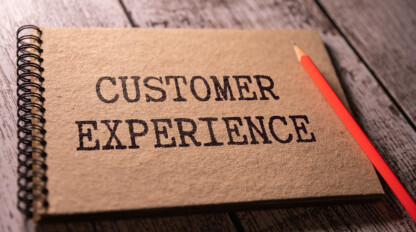Choosing the Right Outsourcing Strategy for Scalable CX

For growing companies like yours, scaling customer experience can feel like an impossible choice between controlling costs and maintaining quality. The challenge isn’t whether to outsource, but how. A one-size-fits-all approach to CX outsourcing is a recipe for brand damage and customer churn. Selecting the right outsourcing strategy is a critical decision that requires a clear framework based on your unique business needs. Let’s explore the key outsourcing models, break down their strengths and trade-offs, and offer a practical framework to help you align your CX approach with financial goals, operational priorities, and brand promise. This is your guide to decoding the models and choosing the right partner for scalable, high-quality CX.
The Strategic Goals of CX Outsourcing
Outsourcing scalable customer support has evolved far beyond its origins as a cost-cutting tactic. Now, it’s a strategic growth lever for companies aiming to scale operations, access specialized talent, and meet customer expectations across time zones. As businesses expand globally and customer demands become more complex, outsourcing offers a way to deliver consistent, high-quality support (often 24/7) without overextending internal teams. It enables organizations to tap into skilled labor pools, accelerate market entry, and remain agile in changing environments.
But as outsourcing matures, so do the challenges. The decision is now about choosing a model that aligns with your brand values and business goals. The real balancing act lies in managing cost efficiency, quality control, cultural alignment, and the ability to scale on demand. Companies like yours must now consider whether your outsourcing partner can act as a true extension of the brand, offering not just transactional support, but meaningful, loyalty-building customer interactions. In this context, outsourcing the wrong model can lead to brand inconsistency and a loss of customers, while the right one can lead to sustainable, customer-centric growth.
Decoding the Core Outsourcing Models: Onshore, Nearshore, and Offshore
Choosing the right CX outsourcing model starts with understanding the core options: onshore, nearshore, and offshore. Each of these options offer distinct advantages depending on your business needs.
Onshore outsourcing involves partnering with service providers within your own country. It offers minimal cultural or language barriers, alignment in time zones, and easier oversight and compliance, making it ideal for complex, high-value customer interactions or industries with strict regulatory requirements. The trade-off? Onshore is typically the most expensive option.
Nearshore outsourcing means working with providers in neighboring or nearby countries. It strikes a balance between cost savings and operational alignment, offering geographic proximity, shared or overlapping time zones, and greater cultural affinity. This model is especially effective for businesses seeking cost-efficiency without sacrificing real-time collaboration or customer experience quality.
Offshore outsourcing refers to engaging partners in distant countries, often across continents. The key benefits are substantial cost advantages, access to large, scalable talent pools, and the ability to build 24/7 support models using follow-the-sun operations. However, it can introduce challenges around time zone differences, language fluency, and cultural nuances. Offshore is best suited for high-volume, transactional support where efficiency and coverage are the top priorities.
The Rise of Hybrid and Specialized Models
Many businesses are also embracing hybrid and specialized approaches to gain a competitive edge. The hybrid model strategically blends different outsourcing types, such as leveraging offshore teams for Tier 1 email or chat support while keeping onshore agents for high-touch Tier 3 technical calls. This approach allows companies like yours to optimize for both cost efficiency and service quality, aligning support levels with the complexity and sensitivity of each interaction.
At the same time, specialized outsourcing is gaining traction, with companies seeking partners that offer deep expertise in specific domains, like multilingual support, advanced technical troubleshooting, or compliance-heavy industries such as healthcare or finance. These partners bring not just labor, but real domain knowledge that elevates the customer experience. Another emerging trend is impact sourcing, where businesses partner with BPOs that hire from underserved or marginalized communities. This model not only delivers operational benefits but also creates measurable social impact, allowing companies to align their CX strategy with broader ESG goals.
A Leader’s Framework for Choosing the Right Model
Selecting the right CX outsourcing model begins with a clear understanding of your strategic priorities.
Step 1: Define Your “Why”
Are you outsourcing to reduce costs, scale quickly, access specialized talent, or boost customer satisfaction? Your primary objective should guide every decision that follows.
Step 2: Assess Key Business Factors
Start with the complexity of interactions. If your customer service is primarily repetitive and transactional, offshore may be a fit. But if your CX involves emotionally nuanced or highly technical conversations, onshore or nearshore options may better protect the brand experience.
Step 3: Consider Your Scalability Needs
Are you facing seasonal spikes that require flexible headcount, or do you need to support steady, long-term growth? Your answer will shape the operational model you need. Don’t overlook brand identity and culture. If maintaining a consistent tone and deep brand alignment is critical, proximity and cultural familiarity become more important.
Step 4: Evaluate Your Budget and Financial Targets
Define a realistic cost-per-interaction goal, and understand what compromises you’re willing to make to stay within budget. With these factors clearly defined, you can map your needs to the right mix of onshore, nearshore, offshore, or hybrid solutions with confidence and clarity.
Learn More at Nashville Customer Contact Week
The optimal CX outsourcing strategy is not a universal solution but a tailored approach that aligns with your company’s specific goals for cost, quality, and scale. By moving beyond a simple cost analysis and strategically choosing your outsourcing partner, you can transform your customer experience from a cost center into a powerful engine for growth and customer loyalty. Learn more by registering for Nashville Customer Contact Week. Happening from Wednesday, October 22, through Friday, October 24, 2025, the Nashville schedule is packed with creative panels, networking events, and inspiring speakers who are leaders from across the customer contact sector.
This is where customer experience professionals come to solve real challenges and shape the future of service. Invest in your development, spark transformation within the organization, and walk away with a renewed vision for what’s possible in customer experience. We can’t wait to see you there this fall. Questions? Reach out to our team.


